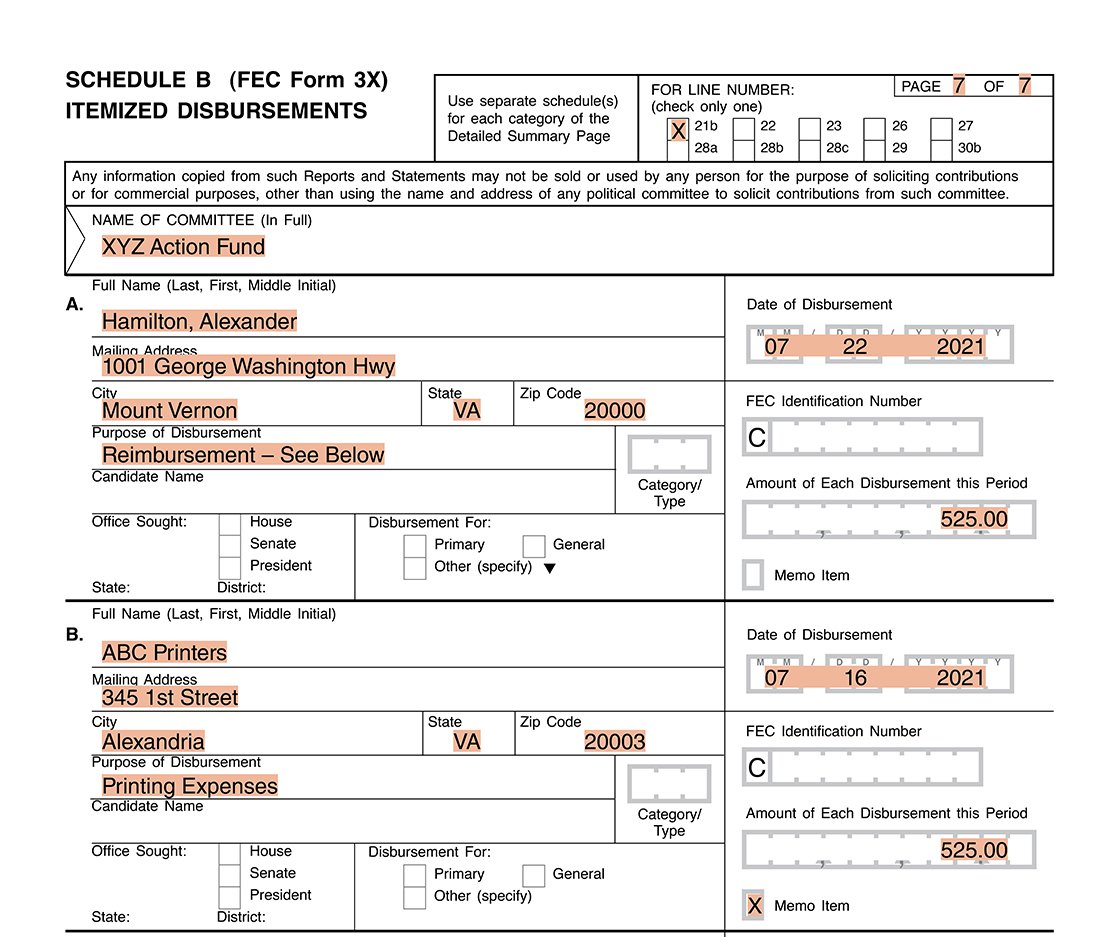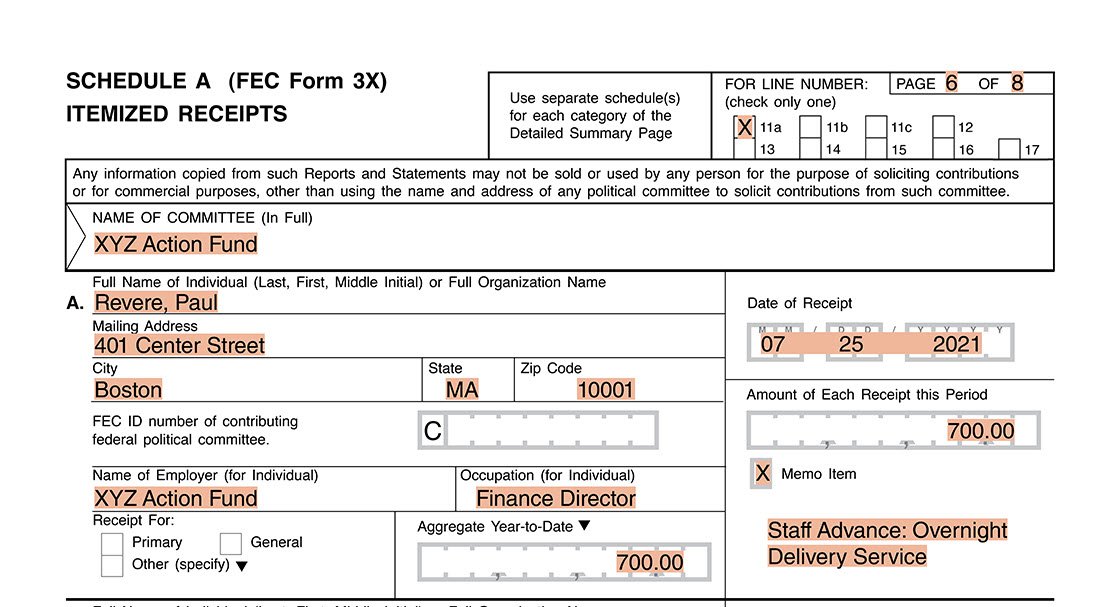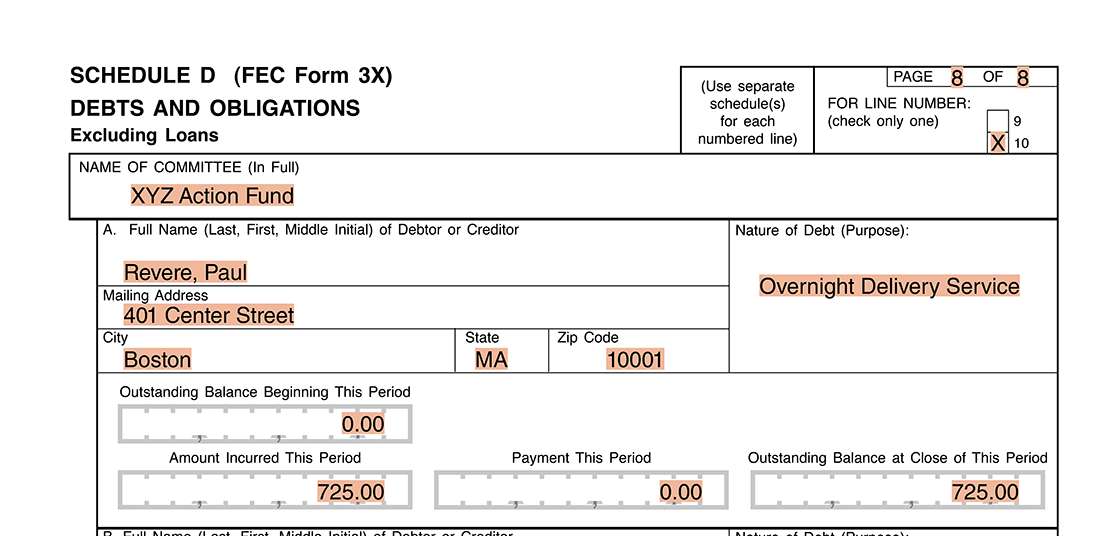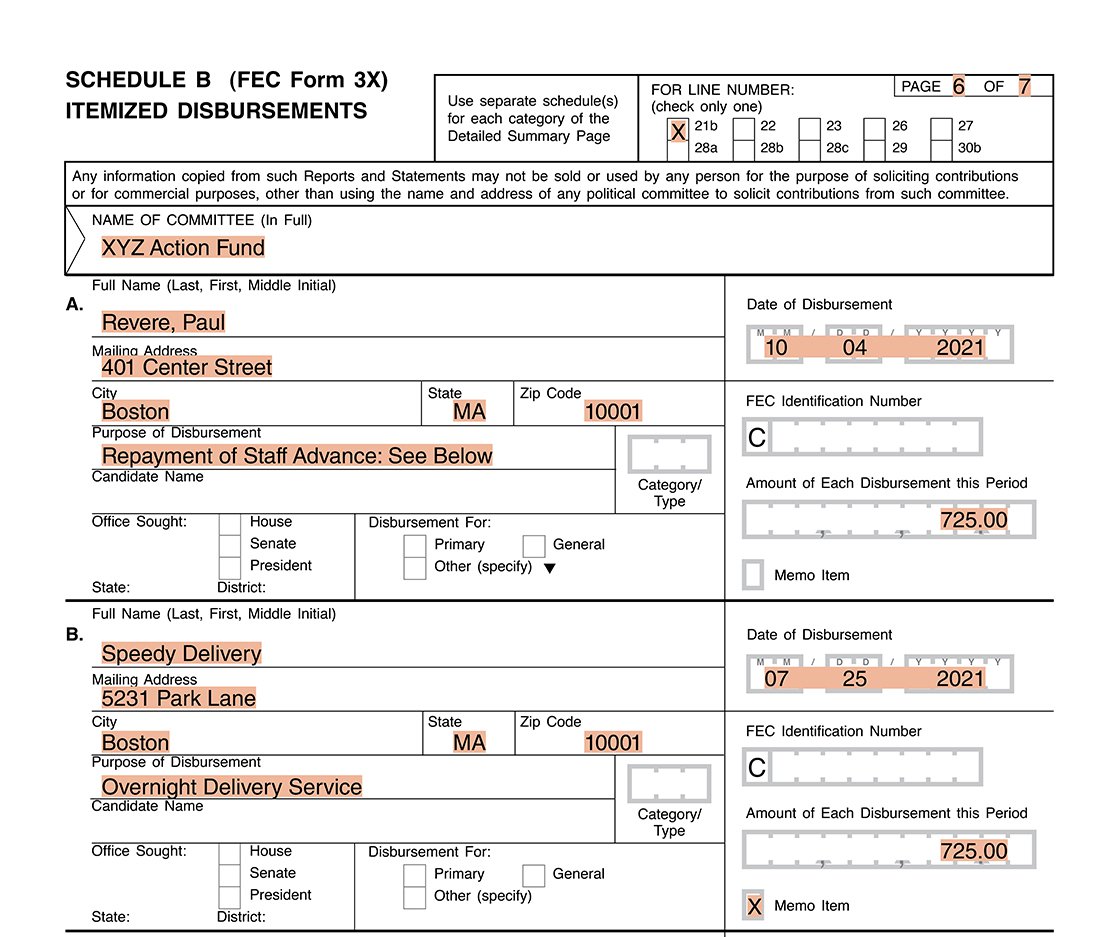Reimbursement of personal funds spent for non-travel expenses
Individuals may use their personal funds (or personal credit card) to pay for expenses on behalf of a PAC or a party committee and they may receive a reimbursement from the committee for these expenses. The committee must report reimbursing the staff member or volunteer and, depending on the amount spent, provide information about the original vendors.
Travel and non-travel reimbursements have different reporting rules. These examples cover reimbursements for non-travel advances. For reporting guidance about travel related advances visit:
Reporting on Form 3X
PACs and party committees report making non-travel reimbursements in the “Other federal operating expenditures” category on Form 3X, Line 21(b).
Non-travel advances made and reimbursed within the same reporting period
Non-travel advances that are made and reimbursed within the same reporting period must be reported as follows:
- Report the reimbursement in the “Other federal operating expenditure” category on Line 21(b). If reimbursements to that person exceed $200 in the calendar year, itemize the reimbursement on Schedule B.
- If an individual’s payment on behalf of the committee exceeds $200 in a calendar year to any single vendor, then the committee must identify the ultimate payee (the vendor) in a separate memo entry on Schedule B. Each memo entry must include the name and address of the vendor, as well as the date, amount and purpose of the payment.

The committee reports the reimbursement to Alexander Hamilton on Line 21(b), disclosing his address, reimbursement date and amount, and a clear purpose of disbursement, "Reimbursement: See Below."
The committee also reports the original vendors where Alexander spent money as memo entries. In this case, he spent money at ABC Printers. The committee includes the original vendor's address, date Alexander spent the money at the vendor, amount, a clear purpose of disbursement, "Printing Expenses," and checks the memo item box.
Non-travel advances made and reimbursed in different reporting periods
Non-travel advances that are not reimbursed within reporting period in which the advance was made must be reported as follows:
Reporting the original advance
Do not report the original advance unless, at the end of the reporting period, the amount of previous contributions in the calendar year from the person making the advance plus the amount of the advance minus the amount of the reimbursement is greater than $200 (i.e. previous contributions + the advance - the reimbursement > $200). If the advance needs to be reported, disclose it as a memo entry in the “Individual contributions" category on Schedule A supporting Line 11(a)(i).

The committee is required to disclose the original advance from Paul Revere as a memo entry on Line 11(a)(i). The memo entry shows Paul's address, employer and occupation, as well as the date the advance was made and the amount of the advance. The committee includes a notation "Staff Advance: Overnight Delivery Services," and checks the memo item box.
Reporting the outstanding advance as a debt
Report the amount of the advance outstanding at the end of the reporting period as a debt on Schedule D if it exceeds $500 or has been outstanding for more than 60 days. Schedule D will be reported continuously until the debt is paid off.

The committee also discloses the advance as a debt on Schedule D, supporting Line 10. Schedule D will be reported with every report until this debt is paid. It discloses Paul's address information and a purpose for the debt, "Overnight Delivery Services." The committee shows $0 debt outstanding at the beginning of the period, $725 incurred this period, $0 payments made, and an outstanding balance of $725 at the end of the reporting period.
When the committee makes payments on this debt, it will show payments in the "payment this period" field and decrease the outstanding balance at the end of the reporting period.
Reporting the reimbursement
Report the reimbursement, once it’s made, in the “Other federal operating expenditure” category on Line 21(b). If reimbursements to that person exceed $200 in the calendar year, itemize the reimbursement on Schedule B. Add a note that references the memo entry on Schedule A if the advance was itemized.
If an individual’s payment on behalf of the committee exceeds $200 in a calendar year to any single vendor, then the committee must identify the ultimate payee (the vendor) in a separate memo entry on Schedule B. Each memo entry must include the name and address of the vendor, as well as the date, amount and purpose of the payment.

The committee shows paying the advance on both Schedule D (showing the ongoing debt) and on Schedule B.
The committee reports the reimbursement to Paul on Line 21(b), disclosing his address, reimbursement date and amount, and a clear purpose of disbursement, "Repayment of Staff Advance: See Below."
The committee also reports the original vendors where Paul spent money as memo entries. In this case, he spent money at Speedy Delivery. The committee includes the original vendor's address, date Paul spent the money at the vendor, amount, and a clear purpose of disbursement, "Overnight Delivery Services."
In addition, if the advance was reported as a debt, the committee will also show the debt payment on the debt schedule in the "payment this period" field, and the total amount of the debt outstanding to this vendor at the end of the period will decrease.
Reporting with FECfile
To enter an original advance as a memo entry on Schedule A, go to the Summary Page tab, right click on “Line 11(a) Individual contributions” and select “new.” Check the “memo” box and add a description, such as “staff advance,” in the description field.
To enter the reimbursement, go to the Summary Page tab, right click on “Line 21(b) Other federal operating expenditures” and select “new.” To add memo entries for the vendors, right click on the reimbursement, select “Transaction Split.” Enter each vendor by clicking “add new.”
To enter the advance as a debt, got to the Summary Page tab, double click on “Line 10 Other debts owed by the committee” and enter the debt.
